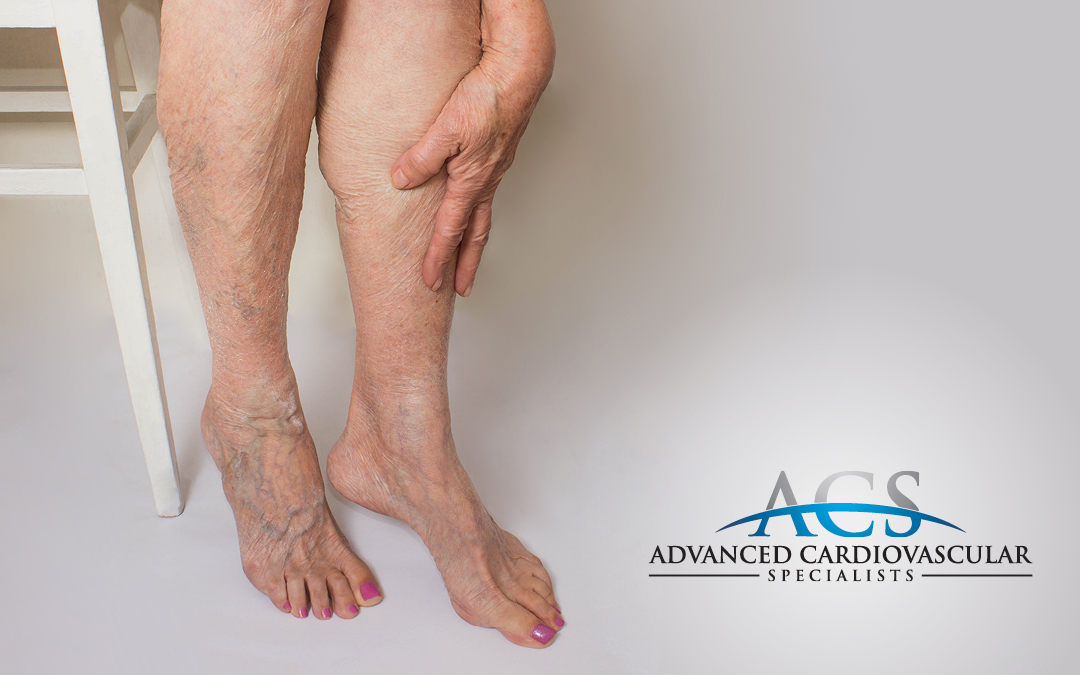Many patients with peripheral vascular disease (PVD) rarely experience any symptoms, and typically the symptoms are quite mild. When symptoms do occur, they are often dismissed as merely the aches and pains of getting older. That’s why keeping your blood vessels healthy, knowing your risk factors, and understanding the signs and symptoms of conditions like peripheral vascular disease are so important.
Peripheral vascular disease is a circulatory condition where blood flow to the limbs is reduced due to narrowed arteries or veins. There are two main types of PVD: Organic PVD, which occurs due to changes in the blood vessels caused by inflammation, plaque buildup or tissue damage; and Functional PVD, which happens when blood flow is decreased as a response to something else such as temperature change. There is no physical damage to the vessels with Functional PVD.
While PVD most commonly affects the legs, the accumulation of plaque in the arteries is usually more widespread within the vascular system, often causing reduced blood flow to the heart and brain. Patients with peripheral vascular disease have a higher risk of heart disease, heart attack and stroke. If left untreated, PVD can lead to gangrene and amputation of the affected limb.
The most common symptom of peripheral vascular disease is pain, cramping or tiredness in the legs that typically goes away with rest but returns with activity. Other signs and symptoms include leg numbness and weakness, skin color changes, cold lower legs or feet, sores that won’t heal, and slower toenail and leg hair growth. Men may also experience erectile dysfunction.
Diagnosis of peripheral vascular disease may involve a physical exam, stress tests, an ankle-brachial index test (which compares blood pressure in the ankle to the arm), blood tests, ultrasound of the affected artery and, in some cases, angiography (which uses a contrast dye to view blood flow in the arteries).
The treatment of peripheral vascular disease often includes medications to reduce cholesterol and high blood pressure; medications to control blood sugar if the patient has diabetes; and blood thinners to prevent blood clots, increase blood flow and reduce pain. Sometimes angioplasty or surgery may also be required to treat peripheral vascular disease. However, in many cases where PVD is discovered early, lifestyle changes may be all that are required to stop the progression of the disease and manage symptoms.
The most important things you can do to keep your veins and arteries healthy include:
- Quitting smoking
- Staying active
- Maintaining a healthy weight
- Eating a healthy diet
- Ensuring adequate hydration
- Controlling blood sugar
- Lowering high cholesterol and high blood pressure
While the greatest risk factors for developing peripheral vascular disease are smoking or having diabetes, other factors (such as age, obesity and family history) can also increase your risk. If you are experiencing leg pain, numbness or other symptoms of peripheral vascular disease, you should seek medical care.
Even if you don’t have any symptoms, you should talk to your doctor about screening if you:
- Have diabetes plus other peripheral vascular disease risk factors at any age.
- Have a history of smoking or diabetes, and are over 50 years of age.
- Are over 65 years of age.
If you are concerned about peripheral vascular disease or other forms of vascular disease, our experienced cardiologists are here to help.
Call 318-798-9400 to make an appointment today.

